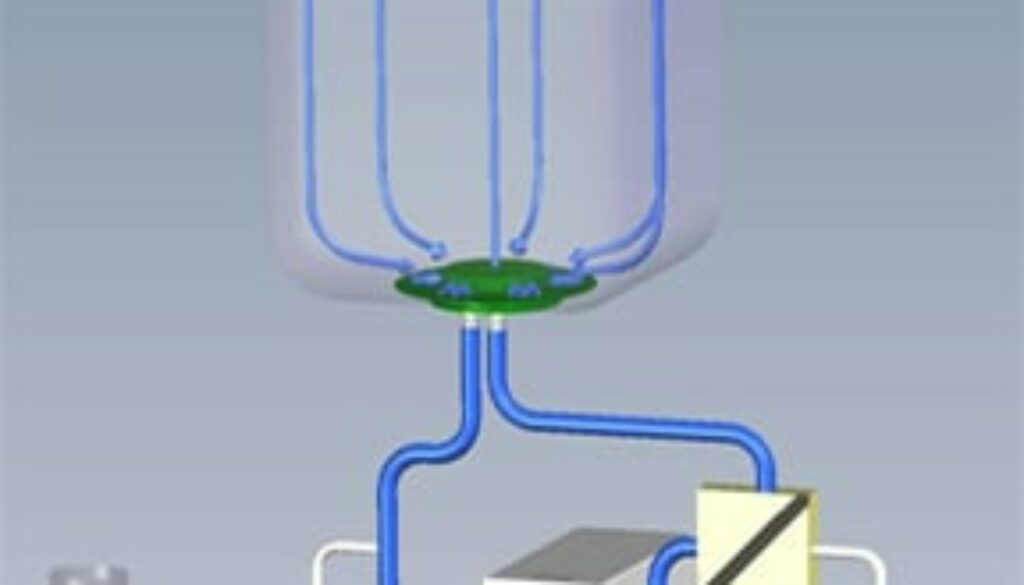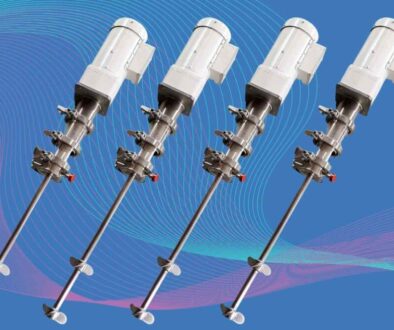Single-Use Mixing Systems: Cut Costs, Reduce Risk & Increase Flexibility
A recent General Electric Healthcare Life Sciences study discovered that single-use mixers “exhibit lower environmental impacts” compared to their multi-use counterparts. As pharmaceutical and biotechnology manufacturers jump on the single-use mixer bandwagon, it’s likely that multi-use mixing technology will eventually become a thing of the past – at least in the highly sensitive, carefully sterilized spheres of biopharmaceuticals.
Single-use mixers are the way of the future when it comes to cutting costs, streamlining efficiency, and boosting output in the biopharmaceutical realm. Single-use mixers, which are comprised of pre-sterilized, disposable, usually polymer-based materials, are replacing stainless steel and glass mixers nationwide. Because single-use technology effectively reduces risks of cross contamination, it can significantly cut operational costs and reduce the corporate environmental footprint for the long term. Big savings over traditional mixing tanks are the reduced time and costs associated with CIP, clean in place, cleaning of equipment between batches.
Single-use mixers require users to dispose of all fluids and the disposable single use bag and mixer after each use. So how does this save money and streamline efficiency? The irony is that replacing the fluids every time actually saves cleaning and waste output, because multi-use mixers must be painstakingly cleaned and rinsed with the typical CIP cycle, purified water, washed with any number of cleaning solvents or acids, and then treated with air or pressurized steam if SIP is required. Cleaning products, chemicals, solvents, water and the heat used to produce steam all equate to added costs, extra time and an increased environmental impact.
Single-use mixers consist of an in-bag impeller, which creates a mixing action inside a hermetically sealed bag (the bag is disposable and often gamma radiated). Boasting results that include economic and operational efficiency, single-use mixers are ideal for media prep, buffer prep, product mixing, certain botanical oils and concentrates, drug formulation mixing, pH and conductivity adjustments, and compounding.
With the reduced cleaning demands inherent to the single-use mixer approach, CIP (Clean-In-Place) and SIP (Sterilize-In-Place) technologies – and their associated problems and risks – are also undermined when single-use mixing is implemented. Because CIP and SIP processes demand so many steps, from multiple “flushes” to solvent washes to “air blows,” the time and energy it takes to clean multi-use mixers is not insignificant. Enter the single-use mixer, which erases the need for constant cleanings as well as the concern that raw materials might become contaminated over the course of multiple agitations within the same enclosure.
The data is in, and it’s overwhelming: Single-use mixers are streamlined, simple, and practical. With slashed validation costs and cleaning times, you’ll find that single-use mixers enable increased operational flexibility across the board, because you’ll suddenly find yourself with more time and resources available to devote to other areas. And single-use mixers drastically reduce the risk of cross contamination, because fresh raw materials will always be entering a brand-new, sterile environment.
For sensitive or sterile operations, single-use mixers are the solution. With less wastewater output, less product waste, and a proven track record for reducing the company’s environmental footprint, a single-use mixer is the efficient, logical choice. Already, single-use mixers are appearing across a number of sectors and not only being used in biotech and pharmaceuticals.




